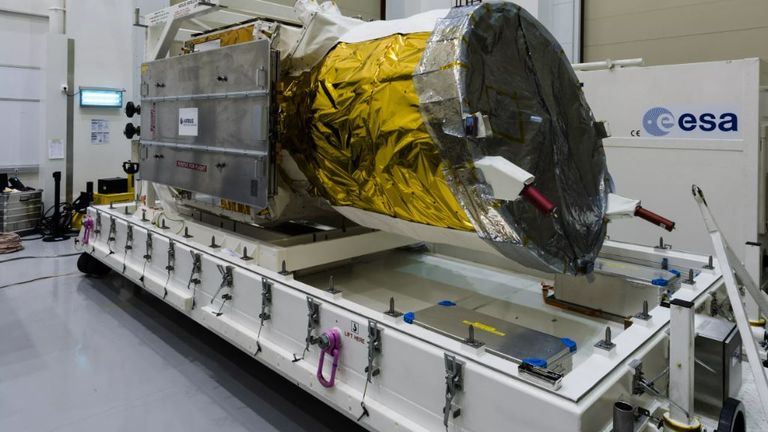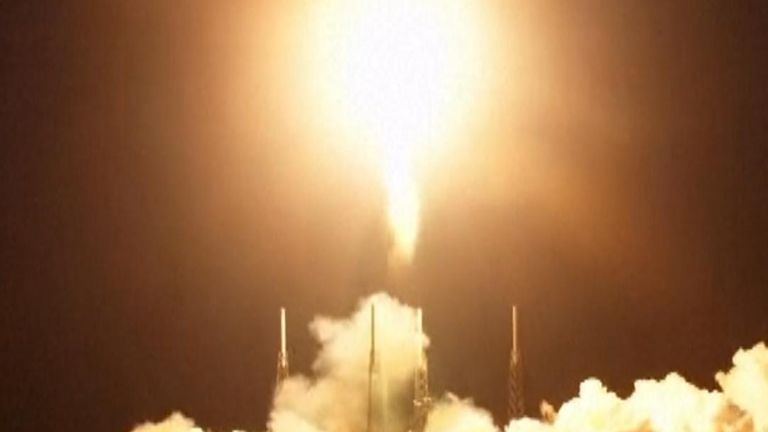A satellite set to return to Earth in an unprecedented assisted reentry will plunge into the Atlantic Ocean next week.
European Space Agency (ESA), said the Aeolus spacecraft would return from orbit in stages, with an operations center in Germany guiding it forward.
Flights will begin on Monday, July 24, with an initial series of maneuvers that will raise its altitude from 174 miles (280 kilometers) to 155 miles (250 kilometers).
The range will drop to 93 miles (150 kilometers) next Thursday, and 75 miles (120 kilometers) next Friday if all goes according to plan.
From there, the satellite is expected to take about five hours to re-enter the atmosphere over the Atlantic Ocean.
Only 20 percent of the craft, which weighs 1.3 tons and is about the size of a small car, is expected to survive.
The remains will sink and no salvage attempts will be made.
read more:
Meet the European Space Agency’s first disabled astronaut
European mission to explore Jupiter’s moons
“A real success story”
ESA officials revealed the timeline at a press conference, It was revealed earlier this month that the satellite was falling about 0.6 miles (1 kilometer) per day.
The U.K. is a member of the agency, which says this type of assisted re-entry has never been attempted. What little fuel it has left will be used to guide it safely to the splashdown.
Since 2018, Aeolus has been orbiting Earth at an altitude of 200 miles (320 kilometers), helping to improve weather forecasts by measuring winds in the atmosphere.
Simonetta Chelli, director of Earth observation at the European Space Agency, said the satellite was a “true success story” that exceeded its projected three-year lifespan.
“Debris neutral” space missions
It is hoped that its guided return will be a turning point in how the spacecraft is managed at the end of its life.
Of the approximately 10,000 spacecraft in space, 2,000 are not functioning and are nothing but debris, said Holger Krag, director of ESA’s Space Safety Office.
“Space sustainability must be a global effort, and we must significantly improve the way we design and execute missions today,” he said.
The number of space launches each year is growing rapidly, from government agencies such as nasa and services provided by the European Space Agency (ESA) to private companies such as SpaceX.
Most launches are to deploy satellites.
ESA wants all of its launches to be “debris neutral” by 2030, meaning that once a mission ends, anything deployed in space must be returned.

